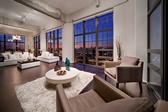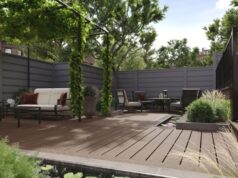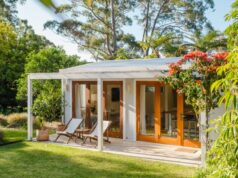
These areas can be lit however you choose, and give you a great deal of freedom to do interesting things with light design.

Because of the amount of time people spend in the living room, it’s very important to design a functional and attractive setup. As the biggest room in most houses, the living room also allows for a fair amount of flexibility in terms of lighting design, and will often rely heavily on daylighting.
Living room lighting design fundamentals
Because living rooms are where families are likely to spend a lot of time, the lighting should generally be warm, but flexible. Ambient lighting should set the mood in your living room, using many different lighting styles to create the desired result. A central overhead light is a good place to start as it will provide a good, basic light source in an average living room. A dimmer switch on this central light will also mean that the amount of light can be adjusted to suit the mood of the room, allowing you greater control of the overall ambience.
When designing the living room, you should also take into account referred light from hallways, the kitchen, stairwells and other areas of the house. This is an inevitable part of the lighting design of most living rooms. If necessary, referred light can be controlled using curtains or doors.
The role of natural light
Natural lighting can easily create the illusion of a larger room, and provides a free, neutral light source during the day. Larger windows allow more sunlight to enter the room and keeping curtains open during the day allows the natural light to fill the room, as well as providing heat during cold months. Skylights, clerestory windows and similar features can have a dramatic effect on lighting in the living room, but if you live in an area that experiences very cold or very hot weather, you need to make sure you also consider heat gain and heat loss through windows.
If your living room also incorporates the dining room, a separate lighting setup with a dimmer of some kind is also an ideal inclusion – just be aware that if you have a dark table or other dark furnishings, they will absorb a lot of light, while a light-coloured or glass table will reflect it.
Decorative spotlighting
Because there is typically plenty of space in a living room, these areas are also used to show off decorations and prized possessions. Mini spotlights and coloured lights can be used in and around shelving and decorative features in your living area to highlight special objects and to create a dramatic effect.





